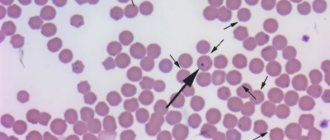Rabies, or as the disease was previously called, hydrophobia, is a very dangerous disease for animals and people. Dogs in most cases become infected after penetrating bites from sick dogs or other infected animals. However, in rare cases, rabies can be contracted in other ways, when the saliva of a sick animal gets into the pet’s open wound, occasionally onto its mucous membranes, and the virus enters the bloodstream.
Rabies has been known for centuries. Even in ancient times (approximately the 5th century BC), this disease was described as a terrible and untreatable disease, leading to death. It was believed that the disease was caused by evil spirits, for these reasons the name “rabies” comes from.
Various vaccines have now been developed to protect pets from infection. They significantly reduce the risk of disease, but cannot guarantee a 100% result.
What is rabies
The disease is caused by the Rabies virus from the rhabdovirus family. Its main feature is its breeding site. It prefers nerve cells instead of the bloodstream, which interferes with the immune response. The action of the protective cells does not extend beyond the circulatory system, so the spinal cord and brain are completely vulnerable. If the central nervous system is seriously damaged, the infected person dies due to cardiac arrest.
The virus is able to survive at low and high temperatures for some time. The only dangers for it are ultraviolet radiation, direct rays of the sun, some disinfectants and prolonged heating. Rabies are killed by boiling for two minutes and heating to 56°C for fifteen minutes.
What animals can get rabies?
All mammals and birds can get rabies. The main reservoir of rabies in nature is wild predatory animals - foxes, wolves, raccoon dogs; There is also a hypothesis that rodents are the natural reservoir of the virus. Bears, lynxes, and moose get sick less often.
For our region, foxes and hedgehogs pose the greatest danger.
Methods of infection
Pets become infected from the saliva of infected animals, where the viral agent enters through parasympathetic fibers. Most often, the disease is spread by wild animals: raccoons, foxes, wolves, bats and hedgehogs. In urban areas, the danger comes from stray dogs, cats and rodents.
The most common method of infection is a bite. You can also become infected by eating an infected animal or getting its saliva on the damaged surface of the skin and mucous membranes.
Answer
It is believed that a dog is man's friend. It won’t offend the owner, much less a small child. Behaves with dignity in human society, when treated properly. A pet dog will not cause serious harm; you need to understand what happened. Why did the child suddenly get bitten? Probably, the baby’s attention was too intrusive, or the child touched a sore spot.
Now the task is not to justify the action of the animal, if the dog is domestic, it is logical to assume that the animal is vaccinated against rabies. This means that the aggression is not caused by an illness in the pet.
Stages of the disease
The infected person becomes dangerous in the early stages shortly after infection. It is very difficult to recognize the disease at the initial stage, since there are no symptoms yet. This is due to the long incubation period.
Incubation period
On average, the incubation period for rabies in dogs is 1-3 months. Its duration depends on:
- Age
. Puppies are especially vulnerable. If in adult pets the virus may not show signs of life for almost a year, then in babies everything becomes obvious already on days 5-7.
- Size and significance of the infected area
. The most dangerous place for a bite is the head. It is easier to reach the nerve endings here. A dog bitten on the head will live less than one bitten on the leg.
- Number of viral agents
. The more viruses that have entered the body, the more damage they will cause.
Regardless of what an infected dog looks like, it becomes a carrier of infection already 5-10 days after infection. This is due to the way the virus reproduces.
After entering the nerve fibers, the infection seeks to reach the cerebral cortex. While in the central nervous system, the viral agent actively creates copies of itself, affecting all internal organs. Having reached the salivary glands, it is released along with saliva and can harm others.
Even a vaccinated pet has a chance of infection. This is possible if the vaccine was administered more than six months ago. By this time, the immune response has weakened and may not be able to cope with too many pathogens.
initial stage
The first symptoms and signs of rabies in dogs are accompanied by sudden behavioral changes. Most often, sick pets become aggressive and lose fear of humans. They attack living and inanimate objects, clinging to them with a death grip. This causes their teeth and even jaws to break.
The period of aggression gives way to melancholy, when the dog tries to hide from light and noise. Any source leads to a repeated outbreak of aggression. When attacked, an infected dog does not bark, but may howl or wheeze.
The name of the disease - hydrophobia - is explained by another characteristic symptom - the fear of water. Panic horror is caused not only by the water sources themselves, but also by the noise of the pouring liquid. This is explained by a spasm of the larynx, which can kill the patient during watering.
Final stage
If a pet is sick for too long, then the reaction to external stimuli disappears. He becomes apathetic and weak. His seizures and breathing become more frequent. Soon the dog dies from laryngeal paralysis or cardiac arrest.
Rabies is dangerous!
1. Definition. Brief historical information about the disease
.
Rabies is an acute infectious disease of animals and humans caused by a virus that affects the central nervous system and is always fatal. Synonyms: hydrophobia, lat. -rabies, hydrophobia.
Rabies was known to people long before our era and is described in various ancient books. Already in Egyptian papyri, Indian sacred books Vedas, Greek and Roman sources, and then in the Bible, rabies was told about rabies, which is transmitted to people from enraged animals (wild and domestic). The dangers of this disease were written about in the Middle Ages, the Renaissance and later. The first mentions of human disease with hydrophobia in Belarus date back to the beginning of the 19th century, although it is known from ancient chronicles that cases of human rabies were noted earlier on the territory of the republic. Officially, the first case of hydrophobia in a person in the republic was registered in 1923.
Currently, rabies is widespread throughout the world. The only exceptions are Antarctica and the island states of Oceania. In the territory of the Republic of Belarus in recent years there has been a significant increase in the number of animals with rabies.
2. Who can get rabies?
Rabies affects almost all species of terrestrial mammals, primarily carnivores (families canines, felines, mustelids, raccoons, etc.). Wild and domestic birds, rodents, and bats can also get sick. Every year in our country hundreds of cases of the disease are recorded among wild (foxes, raccoon dogs, wolves, etc.) and domestic (dogs, cats, cattle, horses) animals. There have been isolated cases of hydrophobia with fatal outcomes among people.
The source of rabies is a wild animal that became infected in the natural environment, as well as a domestic animal that was attacked by another sick animal (wild or domestic). Humans become infected from sick animals.
3. How does infection occur?
The causative agent of rabies is a specific virus contained in the saliva of a sick animal.
Human infection occurs through a bite and penetration of saliva from a sick animal into the wound. Having penetrated through damaged skin, the rabies virus spreads along the nerve trunks to the brain and spinal cord. This is where the virus multiplies and accumulates mainly. Then it penetrates the salivary glands and is released with saliva into the external environment. The virus appears in saliva 1-7 days before the first clinical signs of the disease. Therefore, you can become infected with rabies through a bite inflicted by an apparently healthy animal. Infection can also occur if saliva gets on the mucous membranes of the eyes, nose, mouth, or damaged skin. Scratches caused by claws are very dangerous: animals often lick their paws, so a sufficient amount of virus remains on the claws for infection. You can also become infected when cutting up the carcass of a sick animal, as this often results in cuts to the fingers. Unusual routes of infection should be mentioned. In recent years, the literature has described isolated cases of human infection through intact skin, by airborne droplets (in laboratory conditions, in a cave with millions of bats), through the placenta during pregnancy, and during organ and tissue transplantation. Cases of infection through the digestive tract have been described, so far only for animals. As for humans, to date there is not a single case of human illness known after consuming meat or milk of sick animals.
This is due to the fact that the rabies virus rarely penetrates the blood and glandular organs.
In addition, the virus is unstable in the external environment; it dies under normal pasteurization regimes, and when boiled, it dies instantly. The most dangerous bites are those caused by rabid wolves, foxes, raccoon dogs and
other wild carnivores and bats. Dog and cat bites are somewhat less dangerous. Cases of human infection after contact with a sick farm animal (cow, horse, goat, sheep, pig) are rare. Poultry, although they can get rabies, are not capable of infecting humans due to the lack of salivary glands. Unlike domestic birds, birds of prey (for example, falcons) can infect humans. However, these birds are very rare in the natural environment and the likelihood of their contact with humans is negligible. The possibility of infection of a person as a result of a bite inflicted by a rodent: rabbit, hare, squirrel, muskrat, rat, hamster, mouse cannot be ruled out. However, no reliable cases of human infection from these animals have been described in the world literature.
4. What damage is considered the most dangerous?
The period from the bite to the onset of the disease (latent or incubation period) averages 30-50 days in humans, although it can last 10-90 days, in rare cases - more than 1 year. Moreover, the further the bite site is from the head, the longer the incubation period. Consequently, taking into account the localization (location) of the damage, bites to the head, face and neck are especially dangerous. The category of severe (dangerous) injuries also includes bites on the fingers, because these parts of the body have many nerve endings. Bites to the forearm, shoulder, and torso are considered less dangerous. The incubation period lasts the longest for a bite on the legs.
6. What should you do if you are bitten by an animal?
The duration of the incubation period (i.e., the period preceding the onset of symptoms of the disease) in animals ranges from a week to several months (sometimes years), but already 5-10 days before the onset of the disease the animal is infectious. A characteristic sign of an animal disease in the first stage should be considered a change in behavior: an angry animal becomes affectionate, unreasonably animated, tries to lick the owner’s face; good - angry, irritable, does not respond to the owner’s call, hides in dark corners. The animal refuses its favorite food, but swallows inedible objects (wood, stones, etc.), and sometimes there is increased sensitivity to light and noise. Body temperature rises slightly. If we talk about wild animals, then for those who are sick, such a change will be the desire to make contact with a person: a healthy wild animal will never voluntarily go to a person and will run away whenever they try to get closer. The initial stage of the disease is replaced by the second stage - the stage of excitation, in which the animal’s irritability increases and aggressiveness occurs. An animal can attack or bite for no apparent reason. Next comes the third, paralytic stage, very characteristic of the appearance of the animal: the fur is tousled, the lower jaw droops, the tongue falls out, saliva flows from the mouth. On the 8-10th day the animal dies.
When talking about the clinical manifestations of rabies in animals, one should dwell in detail on the behavior of sick dogs and cats, because
most often encounter these animals .
Rabies in a dog.
In the initial period, the dog becomes depressed, responds reluctantly to calls, and lies down more.
The appetite is sluggish, indifferent to water (but, as a rule, there is no hydrophobia). It must be emphasized that hydrophobia (fear of water) is not a characteristic sign of rabies in dogs. This is very important, since some people, seeing that a dog is not afraid of water (drinks water, swims across a river, etc.) consider it healthy and, if bitten, scratched or salivated by such a dog, do not take protective measures or seek medical help .
By the end of the 2nd day of illness, anxiety and irritability often appear; the sick dog tries to go to some distant corner (under the porch, bed, etc.). Signs of clouding of consciousness occur, she barks for no reason, her voice becomes hoarse, dull, gasps for air and makes other involuntary movements, which never happens normally. Sometimes, as a result of itching at the site where she was bitten by a rabid animal, she chews on the healed wound. It is typical for the dog to swallow inedible objects: chips, stones, etc. As a result of growing excitement, the dog runs away from home, running up to 50 km a day. Along the way, she silently attacks people and animals. The period of excitement lasts 3-4 days, after which attacks of convulsions and paralysis occur. Dogs die on days 6-8 of illness. It should be remembered that the described picture of rabies in dogs is not always observed. But in any case, the animal’s normal behavior changes dramatically, which should alarm the owners and be the reason for inviting a veterinarian. Attempts to treat a dog that allegedly choked on a bone often resulted in rabies.
Rabies in a cat.
Rabies is more severe in cats than in dogs. The first signs of the disease come suddenly and are expressed by increasing anxiety and agitation. The meowing becomes hoarse, dull, the look (very characteristic!) is frightened, cautious. The cat refuses food and avoids its owners. The next day, the cat becomes aggressive, with particular anger it attacks dogs and humans. Excitation lasts 1-2 days, and then paralysis develops. Death occurs within 2-5 days. A characteristic feature of bites from a sick cat is a spasm of the masticatory muscles, as a result of which, after a bite, such a cat can be extremely difficult to tear away from the wound.
It should be emphasized that in case of any illness in the animal, and especially when symptoms of rabies appear, you should immediately contact the nearest
veterinary station. Under no circumstances should you self-medicate an animal - this is deadly!
6. What should you do if you are bitten by an animal?
It is very important to teach the child (his parents) to properly provide first aid to himself and others in case of a bite.
If a child or adult is bitten, scratched, slobbered by any animal, even an apparently healthy one, much less a neglected or wild one, or if there is a suspicion that it has rabies, you should immediately:
1) intensively wash the wound with soap and water for 10-15 minutes, which will wash away the animal’s saliva. It is recommended to wash deep wounds with a stream of soapy water, for example, using a syringe. There is no need to cauterize wounds.
2) apply a sterile bandage to the wound.
You should be warned about the danger of sucking the wound with your mouth.
After this, you must contact the nearest trauma center or any medical institution (clinic, hospital, medical center) as soon as possible. If possible, it is necessary to collect as much data as possible about the bitten animal (description of the animal, its appearance and behavior, presence of a collar, circumstances of the bite, etc.). If the animal is domestic (dog or cat) and has been vaccinated against rabies, then you must take with you a veterinary certificate confirming the vaccination or a registration certificate with a mark on the vaccination.
7.
What will you do with an animal that has bitten you?
It is very important to indicate that simultaneously with contacting a doctor about a bite, it is necessary to take measures regarding the bitten animal (it must be tied up, isolated) and call a veterinarian for consultation. Appearingly healthy pets (dogs or cats) are subject to veterinary supervision for 10 days from the date of the bite. A sick animal must be euthanized. It is impossible to save him. As the disease progresses, the behavior of such an animal is uncontrollable. It is important to prevent human infection.
8. What measures do you know to prevent rabies in animals?
Should a person, caring for the safety of his life, refuse to communicate with animals? Not a single mechanical toy can replace human communication with a living creature of another species. They give us their love and affection, heal us, make us kinder and more humane. We must always remember that animals need care and supervision; they, like people, are susceptible to many diseases. In order to prevent rabies in domestic animals, the Rules for keeping them should be followed:
within three days, register the purchased animal and report it to the veterinary station;
It is mandatory to vaccinate your pet (over 3 months old) against rabies every year; it is better to do this in the winter and spring, especially before going outdoors;
walk animals in specially equipped areas or vacant lots, take dogs outside on leashes and muzzles (this will protect the animal from possible contact with sick wild or stray animals and eliminate the possibility of your animal biting anyone);
You cannot bring dogs and cats to shops, catering and consumer services establishments, schools and preschool institutions, public buildings, parks, squares, stadiums, markets;
minors are prohibited from walking dogs of potentially dangerous breeds;
Under no circumstances should you leave or abandon your animals unattended on the streets, squares, markets, entrances and other places, including in the country.
The best way to prevent rabies in wild animals is to vaccinate them by placing baits containing the vaccine near their natural habitats.
9. Are there any treatments for rabies?
TO
Unfortunately, to date, a person with rabies cannot be cured. Treatment is reduced to alleviating the general condition of the patient. In this regard, the prevention of rabies becomes extremely important in the fight against this disease. It includes the fight against sources of infection (animals with rabies) and the prevention of the disease in humans.
10. What preventive measures are there if you are bitten by an animal?
All kinds of recommendations for the prevention and treatment of rabies - the destruction of enraged animals, cauterization of bitten areas in people with a hot iron - did not produce any effect. Almost every person bitten by a rabid animal was doomed to death. Until the 80s of the 19th century, people did not have a reliable means of protection against this terrible disease.
The great French scientist Louis Pasteur has the honor of creating a vaccine against rabies, which was successfully used for the first time on July 6, 1885. Then, thanks to vaccination, a boy bitten by a rabid dog was saved. And some time later, in a French village, children playing were attacked by a rabid dog. Defending them, fifteen-year-old shepherd Jean Jupille accomplished a real feat. He managed to tie the dog's face with a belt whip and kill it with his wooden shoe. But the boy's entire body was covered with wounds. Barely alive, Jean was brought to Paris. Pasteur saved the hero.
To this day, vaccinations remain the only reliable means of protecting people after being bitten by an animal sick or suspected of having rabies. These include the administration of a vaccine and, if necessary, immunoglobulin.
What you need to know about preventive vaccinations:
-if the doctor prescribed vaccinations, they should be started immediately;
- you should never skip the next vaccination;
-the course of vaccinations prescribed by the doctor must be completed in full;
-a person who is vaccinated is not dangerous to anyone;
- during vaccinations, you should not drink alcoholic beverages for 6 months after their completion; you should avoid overwork, hypothermia, and overheating.
Along with vaccinations, on the recommendation of Belarusian scientists, antibiotic prophylaxis is also carried out.
11. How to avoid being bitten or salivated by unknown animals?
Children are more likely to suffer from animal bites, so it is necessary to constantly educate them and try to avoid unnecessary contact with animals, especially wild and/or stray ones:
You should not play with unfamiliar dogs, cats and other animals; it is better to stay at a safe distance from them;
should not be picked up at the dacha, in the forest, etc. wild animals. Hedgehogs and small rodents can also carry rabies. Incorrect or inappropriate behavior of a child who, due to his age, will not be able to correctly assess the situation, can lead to aggression in any animal, especially a sick animal;
It is better not to pick up homeless stray or sick animals, but if you do, then find an opportunity to quickly vaccinate the animal and show it to a veterinarian;
You should not take an animal “for the summer holiday season”: by throwing it away, you increase the risk of rabies in the given region. It is better not to send children under 12-14 years of age to walk a dog on their own, especially if it is a large and/or aggressive breed of animal. The child may not be able to cope with it, and in the event of a non-standard situation, he may not be able to adequately explain the essence of what happened.
REMEMBER
are very dangerous .
The saliva of wolves, foxes, and raccoons is permeable and contains a large amount of virus.
But you also need to be careful with your pets.
A dog is a good friend and helper of a person, but 85% of people who sought medical help for bites suffered precisely because of improper keeping of domestic
Homeless, stray and unsupervised dogs are especially dangerous. Proper keeping of pets is one of the most important conditions for preventing rabies infection.
If you notice any changes in the animal's behavior,
Take him to your veterinarian immediately.
Rabies is a relatively rare disease, and medicine does not have the means to treat it. However, highly effective vaccines
protecting people from this disease. Therefore, after an animal bite, you should wash the injury site with soap and water, treat it with iodine tincture and consult a doctor.
Only a doctor can determine the need for vaccination. Unauthorized interruptions in vaccination, termination and reduction of the course of vaccinations prescribed by a doctor are unacceptable, because In such cases, the development of immunity is delayed and there is a risk of disease. During
vaccination, it is strictly forbidden
to drink alcoholic beverages, because alcohol reduces the body's overall resistance and often causes unsuccessful vaccinations. You should follow a normal sleep and rest schedule, spend more time in the fresh air, and it is not recommended to overwork or overcool.
Need to know
that the saliva of animals becomes infectious 10 days before the onset of the disease. Therefore, if a person is bitten by an animal, under no circumstances should he be killed within the next 10 days, i.e. the period required for veterinary observation.
If during this time the animal remains healthy, vaccinations against rabies are not carried out.
- If you are bitten by any animal, immediately contact the nearest medical facility.
- Avoid unnecessary contact with wild and stray pets.
- Timely vaccinations will protect you from rabies.
- Animals are vaccinated against rabies in all veterinary institutions free of charge.
The material was prepared by the head of the department of hygienic education I.V. Varada.
| print version | Version for MS Word |
How to identify rabies in dogs: signs
The symptoms of the disease depend on the form. Not all animals are aggressive. Some become overly affectionate or simply fall into apathy soon after infection. In both cases, a change in behavior should alert the owner, since it will certainly differ from the usual.
In addition to behavior changes, watch for the following symptoms and signs:
- hanging skin and disheveled wool;
- photophobia and hydrophobia;
- rapid breathing;
- protruding ribs;
- diarrhea and vomiting;
- protruding tongue;
- chills and fever;
- cloudiness and redness of the eyes;
- refusal to eat and impaired swallowing reflex;
- muscle weakness and unsteadiness of gait.
The bite site is very itchy, so the dog constantly scratches to get rid of the irritation. If the oral cavity is damaged, itching is eliminated by actively chewing bones or furniture.
In domestic animals
Pets can become infected from street animals. The infection is also spread by rats.
If the dog has stopped responding to your voice and is constantly hiding in secluded corners for no serious reason, call the veterinarian. This behavior requires mandatory verification.
In street animals
Homeless animals are especially dangerous because no one monitors changes in their behavior. You can recognize a sick dog only by a sagging jaw, slanted eyes and hanging foamy saliva.
After meeting an infected person, try to avoid contact at all costs. Sick dogs do not warn of an attack by barking, growling or pressing their ears back. The attack will be sudden, so you shouldn’t tempt fate and test your luck.
Be sure to contact your veterinarian. Otherwise, other people or their pets will suffer.
Frequently asked questions about rabies vaccinations
A reliable way to protect yourself from rabies is to get vaccinated.
In areas unaffected by rabies, the veterinary service is required to conduct door-to-door visits and vaccinate all dogs and cats. However, it is not easy to complete such a task. Therefore, take care of the dog’s health yourself.
Dogs living in high-rise apartments are least likely to be in danger. Rabies infection threatens primarily hunting dogs, as well as dogs living in the vicinity of forested areas.
If you are going to travel with your pet, participate in expert exhibitions, or engage in breeding, you are required to obtain a veterinary passport. The document must contain a note about vaccination against rabies.
How long does the vaccine last? How often should I do it?
Adult dogs are immunized annually.
Instructions for the use of rabies vaccines produced in Russia recommend vaccinating puppies from eight weeks of age. Abroad, they adhere to the rule of vaccinating cubs no earlier than 84 days.
To form strong immunity in young animals, one or two vaccinations will be required.
In response to vaccination, antibodies are produced, the viruscidal concentration of which remains for 3 years.
Your dog will not be allowed to breed or show if its last vaccination was more than a year ago.
When does a puppy get its first vaccination?
If you have purchased a puppy, vaccinate it. Clinically healthy pets are allowed to receive vaccinations. Instructions for use of most vaccines recommend that the first immunization be given to an eight-week-old baby. Revaccinate after 3-4 weeks.
Try to use vaccines from the same manufacturer. I recommend vaccinating puppies with polyvalent drugs. If possible, get immunized before replacing baby teeth with permanent teeth. If changing teeth is accompanied by discomfort, reschedule the revaccination.
How to prepare a dog
The dog must be absolutely healthy. 2 weeks before the proposed vaccination, free your pet from fleas, and 7 days from worms. Parasites interfere with the formation of immunity and contribute to the occurrence of post-vaccination complications.
Protect the unvaccinated animal from contact with its yard relatives.
Feed your pet nutritious food, preferably premium ready-made food or higher. Do not change food, do not introduce new ingredients, limit treats.
3 weeks before vaccination, do not use antibiotics or hyperimmune serums. Do not feed your pet before vaccination.
The veterinarian examines the dog and conducts thermometry. If it is elevated or the dog is found to be unwell, the procedure is postponed to another time.
To prevent an allergic reaction, an antihistamine is administered. Do not rush to leave the clinic. Observe your pet’s behavior for a quarter of an hour so that you can provide him with emergency assistance if complications arise.
Watch the video:
Where to get vaccinated?
Read the instructions carefully. Most biological products are administered subcutaneously, in the withers area, or intramuscularly in the thigh.
If you are using an inactivated monovaccine against rabies, treat the injection site with 70% alcohol.
When vaccinating with a complex preparation, it is impossible to moisten the skin with alcohol before the injection - the living weakened components of the biological product will die.
On topic: How to give an injection to a dog
Can a vaccinated dog get rabies?
Vaccination reliably protects your pet from rabies, however, it does not provide a 100% guarantee.
A breakdown of immunity occurs in the following cases:
- The rules of transportation and storage were violated. If you purchase the vaccine, make sure it is stored in the refrigerator. Transport in a thermos with ice. The biological product cannot be frozen.
- The expiration date has expired.
- The drug was not administered to the place indicated in the instructions.
- The injection was given to a non-dewormed or sick dog.
- An animal that is in the incubation period of infection was vaccinated.
- The dog has a congenital defect that prevents the formation of immune bodies.
During the USSR, medicines for dogs were obtained. In the nineties, biological products began to be produced at the research institute. I learned about the production of a medicine that has an antiviral effect. I called and found out how to purchase. I was informed that an employee of the company was going to pass by my city on vacation in Sochi and would bring biological products. It was summer, the travel time was 3 days. I boarded the train, after the conversation I bought some immunoglobulin and distributed it to my friends. One veterinarian complained that the medicine did not work. Apparently, due to the fact that the transportation regime was violated.
What side effects and complications are possible?
The dog is injected with an antigen, even if it is killed. Therefore, the body reacts to the appearance of a stranger, due to which antibodies are formed against this virus.
Normal post-vaccination complications include the following symptoms:
- hyperthermia, 0.5° above normal;
- lump at the injection site;
- malaise;
- one-time refusal to eat;
- single vomiting or short-term diarrhea in the absence of bloody discharge;
These symptoms are typical for puppies that are being vaccinated for the first time. Adult pets tolerate the vaccine without clinical manifestations.
Vaccination.
Quarantine after vaccination
The concentration of antibodies increases gradually and reaches a viruscidal value 3 weeks after vaccination in puppies and 2 weeks after vaccination in adults. During this time, limit your pet's stay outside.
During this period, provide peace to the dog, do not create stressful situations, and do not change the diet.
Do not wet the injection site, do not bathe your pet, and limit physical activity.
How much does it cost on average?
The state program for combating especially dangerous infections of animals and humans requires free vaccination against rabies for the entire population of dogs and cats in areas affected by rabies.
However, owners of purebred dogs prefer to vaccinate their pets with commercial vaccines, because cheap Russian-made biological products do not enjoy a high international reputation. Veterinarians at government agencies are not interested in immunizing outbred livestock.
In private clinics, the average cost of vaccination is 500 rubles.
They produce monovalent bivalent and complex vaccines.
The cost of vaccinations against rabies ranges from 100 to 200 rubles.
The price of polyvalent biological products ranges from 250 to 700 rubles.
At the clinic, there is a markup on biological products. Therefore, expect the cost of an anti-rabies vaccination to be 800 rubles, a complex Russian-made vaccine to be 1000 rubles; imported - 1500 rub.
In the dog's passport, they make notes about vaccination.
Forms of rabies in dogs
Veterinarians identify 5 forms that determine how rabies manifests itself in dogs. The most common is violent, occurring in almost all infected people. Rare ones include atypical and abortive. There is a chance of sudden recovery only with the last of them.
Violent and its stages
This form lasts 5-11 days. It includes 3 stages:
- Prodromal
. The dog becomes apathetic or overly affectionate. The behavior is very different from usual. Due to the lack of oxygen, the pet often yawns, swallowing air, and saliva constantly flows from its mouth. Appetite worsens and severe anxiety appears. The patient begins to avoid loud sounds and bright lights. This stage takes 1-3 days.
- Manic
. Aggression appears. The strength of grasping movements increases. The attacker is capable of crippling not only the owner, but also himself. Clenching your jaws too hard can cause them to break. Due to paralysis of the larynx, the animal's voice changes to a more hoarse voice. The saliva that comes out foams intensely. Mood swings appear. Violence and depression alternate. The patient suffers from hydrophobia and shows interest in inedible objects. The eyes become red and inflamed, and the body suffers from painful convulsions.
- Paralytic
. The pet's voice disappears. Aggression recedes. The body becomes exhausted. The lower jaw droops. The tongue hangs out of the mouth. The larynx gradually becomes paralyzed. Along with it, paralysis binds all four legs. The dog falls into a coma. Organs gradually fail. Once the heart stops or breathing stops, death is recorded.
The first and second stages take 1-3 days. The final one lasts no more than a week.
Quiet
The name of this form is explained by the lack of aggressive behavior. The disease takes away the pet in 3-5 days.
The dog becomes lethargic, but retains its appetite. Soon he begins to eat inedible objects and cough frequently. Salivation gradually increases, and problems with the swallowing reflex appear. The jaw drops and gait becomes difficult. Gradually, paralysis covers the entire body and kills the animal.
Atypical
It is characterized by long-term development and the absence of sudden changes in mood. On average, the disease lasts 3-6 months.
With this form, all symptoms that arise resemble gastroenteritis, which complicates timely diagnosis and increases the likelihood of infection of other animals and people. A bitten pet's activity decreases. He becomes lethargic and weak. Appetite decreases. Vomiting and diarrhea interspersed with blood appear.
Returnable
Accompanied by periodic remissions lasting over a week. Despite the improvement in health, each relapse becomes more severe and ultimately kills the animal. This condition can last up to six months.
Abortive
The rarest form, accompanied by spontaneous recovery. Due to the small number of favorable outcomes, the reason for the sudden recovery has not yet been found.
Is treatment possible?
No treatment has been developed for dogs. However, there is a chance of salvation.
Bring your dog home on the day of the bite. Put a collar on him and rubber gloves on yourself. Trim the hair and wash the wound with soapy water. Use laundry soap and a syringe; there is a possibility that the virus will be inactivated by an alkaline environment.
Immediately contact the hospital so that the veterinarian vaccinates the dog and applies an immunomodulator. It is hoped that during the incubation period the body will have time to produce antibodies.
If clear clinical symptoms appear, the dog is doomed.
In any case, the dog is isolated for 10 days.
How long does a mad dog live?
If pronounced clinical signs appear, the pet may die in 2-11 days.
With an atypical form of rabies, a dog can live up to six months, but the cause of its death may remain unknown unless post-mortem diagnosis is carried out.
Risk of infection from a dog
Humans are also warm-blooded animals, so the risk of infection is very high. The most dangerous places for a bite are the hands, neck and face.
Soon after infection, the bitten person experiences a headache, slight fever, diarrhea, vomiting, cough and general malaise. As the disease progresses, neurological disorders and paralysis are added. Without timely help, a person dies.
If rabies is suspected
Avoid contact with potentially dangerous animals and call a doctor. If your pet is infected, isolate it in a separate room until doctors arrive.
What to do if you are bitten by a rabid dog
The wound should be washed as soon as possible with running water and a thick soap solution. This should be done not only if you are bitten, but also if you receive a scratch or saliva gets on the skin. After treatment, lubricate the affected area with an antiseptic and apply a bandage.
If the bleeding is weak, do not block it, but allow some of the blood to drain before washing. This will remove some of the saliva and reduce the concentration of the virus.
In addition to your veterinarian, contact an emergency room immediately. For a favorable outcome, characteristic signs of infection must not be allowed to appear. The victim will have to receive 6 injections in the shoulder area over 3 months. The virus is suppressed by immunoglobulins or rabies serum. In the first case, the drug pre-contains antibodies that attack the infection, and in the second, the body produces them on its own.
What measures need to be taken
If you notice signs of illness in your dog, the pet must be immediately isolated. You need to act quickly, but without fuss:
- Put a collar and leash on the dog.
- Take him to a separate place. In an apartment this can be a storage room, a loggia or a separate room. In the private sector - an aviary, a barn, any place on the site, preferably under a canopy.
- Tie the dog firmly to a secure object. Keep in mind that a sick dog becomes very strong at the moment of aggression and can run away. We need to provide for this.
- If the animal’s aggression is pronounced, it is necessary to put a muzzle on it. It is better to let the dog starve for several days than to risk the lives of other people and animals.
- Call your veterinarian and report a possible rabies outbreak. The specialist will give recommendations on further actions.
- If there is a second pet in the house (dog, cat, hamster), it is also necessary to isolate them from both the sick animal and people.
- When feeding, do not approach the animal.
- Monitoring the dog's condition lasts 10-14 days. During this period, the sick animal's symptoms usually worsen and death occurs.
If no further signs appear and the dog is alive, then it has another disease with similar symptoms.
A veterinary clinic can test for rabies in dogs, but the disease can only be detected 7-15 days before the end of the incubation period.
Diagnostics: rabies test
To exclude other similar diseases, blood is taken from the dog for ELISA or PCR analysis. There is also a rapid test that determines the presence of the virus in saliva. These diagnostic tests are performed very rarely. They are not only dangerous for doctors due to the threat of infection, but also uninformative due to frequent false negative results.
The only reliable diagnostic method is to examine brain tissue. It is carried out posthumously to confirm which disease the four-legged patient died from. If the result is positive, the analysis shows the presence of Babes-Negri bodies - neoplasms that appear in the brain when infected with the virus.
Other changes are noticeable only at autopsy. An accumulation of exudate is found in the spinal canal, and numerous hemorrhages are found in the stomach and cerebral convolutions.
Immediately after contacting the veterinarian, the animal is placed in a closed box for up to 1 month. The four-legged patient continues to be fed, monitoring changes in condition. If there is a sudden improvement and no relapses, the dog is considered healthy.
Prevention measures
The disease can only be prevented if your pet is vaccinated against rabies regularly, once a year.
The first vaccination is given to puppies between two and four months of age. Then every year, at about the same time, the vaccination is repeated.
If the pet is vaccinated, then infection can occur only in certain cases:
- The vaccine was expired or stored incorrectly. This can be avoided if you use the services of only reliable, trusted veterinary institutions.
- The animal was already infected at the time of vaccination, and the disease was in the incubation period.
When walking with your pet, it is advisable to avoid communicating with unfamiliar animals, and if you notice a pack of dogs along the walk route, you should avoid it.
Is it possible to cure rabies in a dog?
Once symptoms of rabies are diagnosed in dogs, treatment and any other contact are excluded. Despite the low probability of an abortive form, the patient is euthanized immediately after the onset of hydrophobia and paralysis. A cure for the disease has still not been found, so this is the only humane solution to ease further suffering.
Before symptoms appear, the dog is vaccinated twice. The second time the vaccine is administered 2 weeks after the first injection. In the absence of characteristic signs, preservation of the same state of health and a negative result of a rapid test for the presence of the virus, the animal is considered healthy.
Incubation period of the disease
On average, the first signs of rabies appear after 14 days.
after the virus enters the body. As a rule, if a large amount of virus has been received, the disease will be noticeable within 1-2 weeks. If a small amount of the virus was transmitted to an animal, the disease can “come back to haunt” even six months to a year after contact with a sick animal.
A dog carrying the virus poses a danger to humans and animals approximately 7-14 days before the initial signs of the disease appear. Unfortunately, you can become infected with rabies even from a dog that shows no signs of infection.
How to protect your dog from infection
The main method of prevention is timely vaccination. All other methods are considered additional. They also reduce the likelihood of infection, but are effective only when used in combination.
Vaccine
The first vaccination is given to the puppy at 3 months or after the appearance of the molars. All subsequent vaccinations are carried out annually.
A persistent immune response appears only after the 3rd injection, but even then it does not provide one hundred percent protection. Vaccinated pets receive the right to participate in exhibitions and can freely travel outside the country.
The main reason for refusing this preventive measure is the price. Not all owners have the opportunity to pay for the vaccine annually. As an alternative solution, veterinarians advise contacting government clinics, where the procedure is carried out free of charge using domestic drugs.
Before vaccination, the four-legged patient is treated for parasites and checked for diseases. It is not recommended to vaccinate a sick, pregnant or lactating animal. This can lead to infection due to too weak an immune response from the exhausted body.
Can a vaccinated animal get sick?
The immune response lasts up to a year, but weakens within six months after vaccination. It is from this moment that the vaccinated pet becomes more vulnerable to infection. Rare cases of infection account for only 2-4%.
After an attack on a vaccinated dog, prepare a veterinary passport with notes on the vaccines administered. He is also vaccinated and isolated for a certain time until the circumstances are clarified. If vaccination was carried out recently, and your pet managed to scratch or bite you, the administration of anti-rabies serum is not practiced.
With timely treatment, the likelihood of death is almost zero. The existing immunity and an additional dose of serum are guaranteed to get rid of the infection.
What to do if your dog is bitten by a suspected rabies carrier
Immediately after a bite or other injury, first aid is allowed. For your safety, be sure to wear protective gloves and use a muzzle. After this, proceed with the following steps:
- Remove hair from the damaged area with scissors.
- Wash the wound with plenty of soapy water. Use a syringe to remove some of the saliva by squirting the liquid under pressure.
- Isolate your pet in a separate room and call a veterinarian. The pet will be taken into temporary quarantine to ensure its safety for others.
Don't ignore the attack that has occurred. If you are not sure about the health of the attacked animal, then do not try to check the possible consequences in practice. Temporary isolation will not harm your pet, but will only help avoid a fatal disease.
How can a person be saved from being infected by the rabies virus?
Absolutely every person should know what to do if bitten by a dog with rabies. And it doesn’t matter so much whether it’s your own or a homeless one. So, the actions should be like this:
- If the bite occurred in an area protected by clothing, you need to quickly determine whether the fabric is torn or not. If the dog's teeth reach the body, you need to firmly squeeze the skin around the bite, squeezing out a little blood along with infected saliva;
- The wound should be washed and treated with iodine, brilliant green or hydrogen peroxide;
- You should immediately contact a medical facility to donate blood and take a smear from the cornea to confirm or refute the diagnosis;
- The hospital will need to give consent for the administration of rabies vaccine and immunoglobulin. Moreover, all the specialist’s instructions must be followed strictly, otherwise the virus can cause irreparable harm to the body.
Rabies is not a disease that can be taken lightly. Once visible signs of illness appear, it will no longer be possible to save a person’s life. Treatment will be aimed only at reducing the patient's suffering. Ideally, after any bite from a stranger or your own dog, it is better to immediately contact a specialist.











